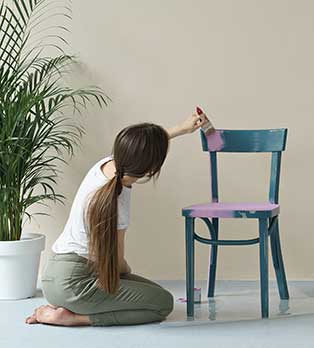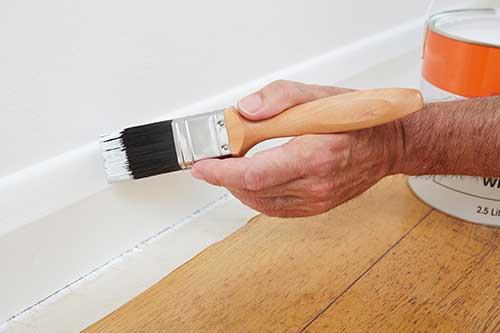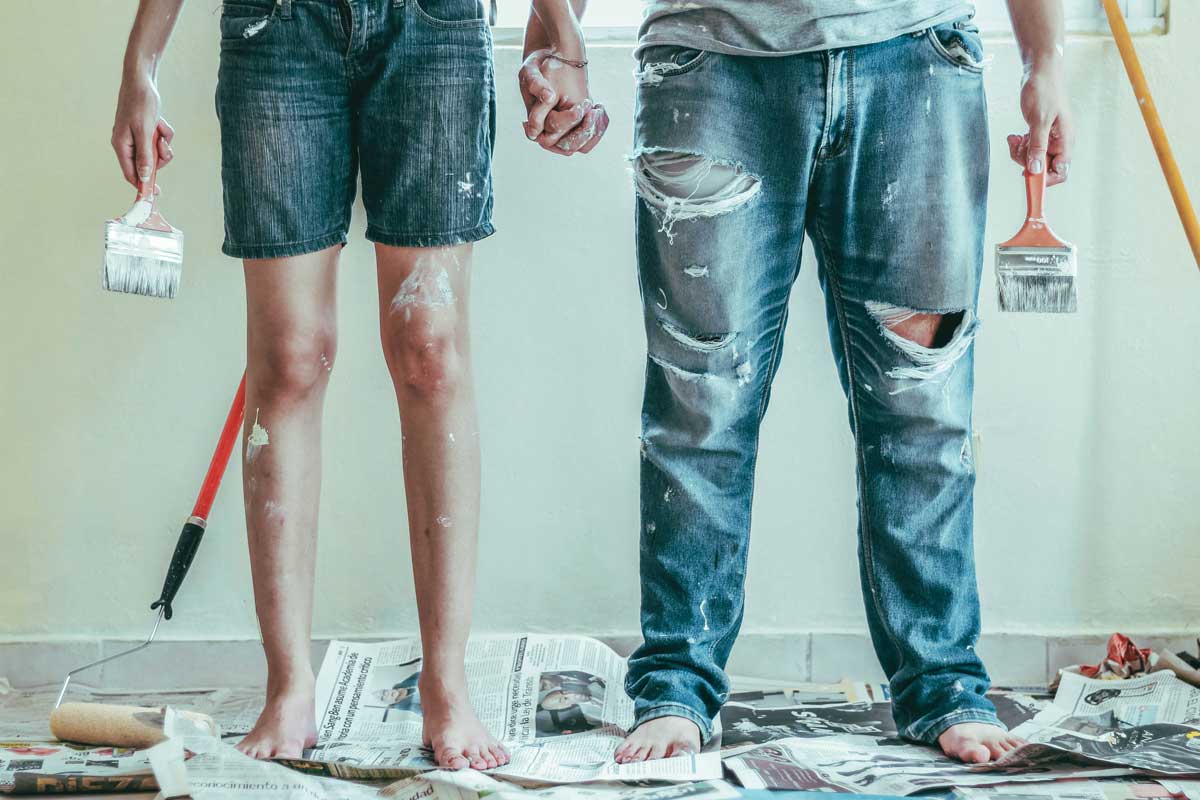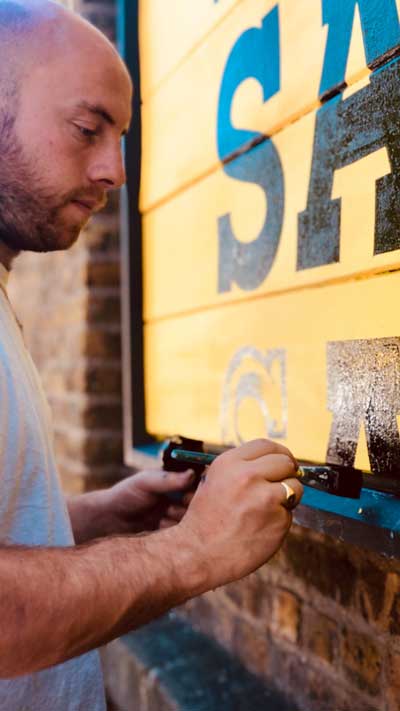Guide to Choosing the Best Paintbrush
Buying a paintbrush seems to be effortless and straightforward, but did you know that the one you choose can impact the final outcome?
A statistic from 2017 shows that more than 49% of Americans prefer to do their painting on their own.
If you are one among them, this article is for you. Here’s a complete guide to choosing the right paintbrush for your needs.
What Is the Best Paintbrush Currently in the Market?
Not all paintbrushes are created equal.
Some projects needing lacquers or oil-based paints require synthetic bristles. But others like latex-based paint serve better with natural bristles.
The best paint brushes currently in the market are:
- Presa Premium 5-Piece Set
- Purdy White Bristle Sprig 3-inch Flat Sash Brush
What Paintbrushes Do Professionals Prefer?
The brushes used by professionals vary depending on the paint, surface area, and projects as well:
- Oil-based paint: Natural bristle brushes made from China bristle or hog hair
- Water-based paint such as latex: Synthetic filaments
How Do I Choose a Paintbrush?
The brush you choose for your DIY projects depends on various factors, including:
- Bristles: Your pick should suit the finish. Natural bristle brushes are best to be used with oil paints however synthetic bristles serve water-based paints better.
- Size: Go for 1-1/2 inch brush in the case of wood and 2-1/2-inch brush for trim. Choose the right size considering the project. You might need different sizes based on your requirements.
- Shape: Choose a wide cut for flat surfaces, but for trim or cutting in, an angled works better to control the paint.
What are Paintbrush Sizes?
Paintbrushes vary in size, and the number in the handle indicates the same. The sizes start from 000 and go up to 00, 0, 1, 2, and so on.
The size and width of the brushes also increase with the number. However, this is not consistent across all the brands available in the market.
What are the Best Types of Paint Brush?
Paintbrushes can be:
- Natural: Animal hair such as hog or badger
- Synthetic: Nylon, polyester, or nylon polyester blend
What Is the Apt Brush for a Smooth Finish?
Brushes with natural bristles and flagged tips give a smooth finish to your walls. They are best used with different types of oil-based paints such as shellac, top coats, and urethanes.
The stiff nature makes the more viscous paints go easier.
 What Types of Brush Are Best for Painting Furniture?
What Types of Brush Are Best for Painting Furniture?
Bristle made from animal hair works best for different types of oil-based paints, varnishes, shellac, and topcoats. Combine it with a round brush for the paint to go smoothly.
What Is the Best Brush for Painting Furniture?
Paintbrushes for furniture should range from 1-inch to 3-inch. These sizes allow you to cover everything from nook and crannies to an entire surface.
Here are the premium quality brushes from top brands in the market:
- Quality Purdy Dale Angular Trim Brush
- Quality Wooster Shortcut Angle Sash Paintbrush
- Quality Bates Paint Brushes – 4 Pack
What Is the Appropriate Brush for Cabinets?
For painting cabinets, get angular sash brushes. The angle helps you maintain control even in small spaces. The handle should be either rubber or wood for a good hand grip.
The best paint brushes for cabinets are:
- Purdy Cub Angle XL
- Pintar Diamond Pro Angular Sash
- Nour Tradition Angular Brush
- Wooster Shortcut Angle Sash Paintbrush
Which Is the Appropriate Paint Brush for Chalk Paint?
A natural bristle paintbrush works the best for chalk paint. However, sometimes your all-purpose brushes also work but then only when in a pinch.
The look you are going for is a hand-painted look that shows off the brush strokes.
- Chalk paint brushes by Annie Sloan
- Tatler & Tatum chalk paint & wax brush
- Brossum large 2-in-1 round chalk & wax brush
 Which Brush Can I Use for Trim?
Which Brush Can I Use for Trim?
Sash brushes are ideal for trim areas like windows, doors, door frames, gutters, skirting boards, etc. These have a fewer amount of filaments and do not hold much paint.
The handle should be either short or square since they allow for control and precision.
- Wooster 2 1/2″ Silver Tips Angle Sash Brush
- Bates 2-Pack 2 1/2″ Angle & 3″ Flat Trim Brush
- Wooster Shortcut 2-inch Brush
Which Is the Best Brush for Gloss?
You need a thin bristled natural brush for applying gloss on wooden accessories like skirting boards and staircases.
- Hamilton – Glossing Paintbrushes
- Harris – Platinum Paintbrushes
What is the Best Way to Clean Gloss Paint Brushes?
Gloss being oil-based can be challenging to clean. Apply a cleaner or spirit to clean the gloss and finally wash with soap and let dry.
Do not let the gloss dry on the brush at any cost. This can lead to split ends on the tips.
How Do I Choose an Acrylic Paintbrush?
Consider the following when choosing an acrylic brush:
Size: Big brushes for painting larger areas and smaller ones for details.
Material: Choose from a natural or synthetic brush, something that suits your style.
Shape: Every shape delivers a different result. Your shape depends on the effect you are looking for.
What Kind of Brushes Do I Get for Acrylic Painting?
Nylon works the best for acrylic since they provide a smooth stroke compared to its counterpart.
The brushes you are looking for are:
- Pro-Arte Acrylix Series
- Winsor & Newton Galeria range
- Da Vinci Junior range
Can You Use Makeup Brushes for Acrylic Painting?
Yes! You can go for one when working with acrylic. However, there is a lack of sizes and shapes.
What Brush Can I Use for Oil-Based Paints?
China bristles, particularly hog hair ones, work better for oil paints.
Coming to surface areas, white filaments work best on smoother surfaces. On the other hand, black filament suits rougher surfaces.
For an ultra-fine finish, get the ox hair blend.
Can You Use Synthetic Brushes for Oil-Based Paint?
Yes! You can work with them when in a pinch, but most brushes are not tough enough to handle oils.
Which Type of Brush Filament Is Best for Oil-Based Paints and Stains?
Filaments made from animal hair is a good choice for oil paints and stains.
Which Paintbrushes Work for Water-Based Paints?
Synthetic brushes like nylon or polyester work best with these paints. Nylon/polyester blend is the choice of many due to its versatility.
Can You Paint the Walls with a Brush?
Yes! You can paint your wall with a brush. But try not to hold more paint.
- Dip the tip with a small amount of paint.
- Instead of long strokes, go for shorter strokes.
What is the Right Brush for a Wall?
The right brush gets you a uniform as well as a high-quality look for your wall. As such, the best paintbrushes in the market are:
- Wooster Q3211-2
- Purdy 144400340 XL
- Purdy 144152125 Clearcut
What Is the Best Size for Cutting In?
A 35mm angled brush works the best for cutting in. It allows for maneuvering into small areas and working with great detail.
What Is the Apt Paintbrush for Latex Paints?
For latex paints, you need:
- Blend of nylon and polyester for a premium polish. They can last for years and retains their shape for a long time.
- Polyester: They can hold their shape in all mediums. The paint goes on evenly and smoothly.
Can You Use a China Bristle with Latex Paint?
No. China bristles do not work with latex paints.
However, you can go for modified nylon filaments similar to that of china bristles for latex.
What Paintbrushes to Buy for Beginners?
As a beginner, when you are just starting, brush sets are an ideal pick. You get a wide range of brushes to practice with.
But the compromise you make here is the quality. The good quality brush is found only in individual ones. But as a whole, the price point is not worth it for a beginner.
Why Does My Brush Leave Streaks?
Paint with a soft touch. Pressing down hard causes the brush to fan out, causing streaks.
A thicker brush permits you to apply pressure without fanning.
How Do You Stop Brush Marks When Painting?
Follow the below tips to prevent brush marks when painting:
- Do not apply pressure. It can cause streaks.
- Paint the details and then go over.
- Do not paint over a semi-dry paint.
- Apply a thin coat. Refill often for an even look.
Are Expensive Paintbrushes Worth the Price?
Though expensive brushes cost you more, they can save more in terms of time and money.
- They are of top quality and can give you a straight line.
- They give an even coating.
- They are without any doubt durable and long-lasting.
Are Purdy Paintbrushes the Best?
Being one of the top brands in the market, its handcrafted brushes are a favorite of many.
- They are made with superior craftsmanship.
- They deliver a smooth coat.
- Comfortable handle to prevent arm fatigue.
- It can hold more paint.
Purdy Brushes, Are They Worth the Money?
Though higher on the price point, Purdy brushes:
- Give a high-quality finish.
- Last longer than the cheap ones.
- Light and easy to use.
However, buy a Purdy only if you are taking up large projects.
Can a Brush Be Used in Cooking?
Yes! You can use a nylon brush for cooking. They are perfect for applying sauces, glazes, and marinades for baking and grilling.
They are also easier to clean than conventional brushes.
Conclusion
Paintbrushes can either be natural or synthetic. While the former is made of animal hair, the latter comprises nylon or polyester bristles.
The choice of the brush depends on the situation, project, selection of paint, and also the surface.
It is worth spending money on a Purdy or Wooster, especially if you are taking bigger projects. They manufacture some of the best paintbrushes in the world.
Their quality is unmatched so is their price.
If you are looking for some inspiration, here is a link to our painting gallery











